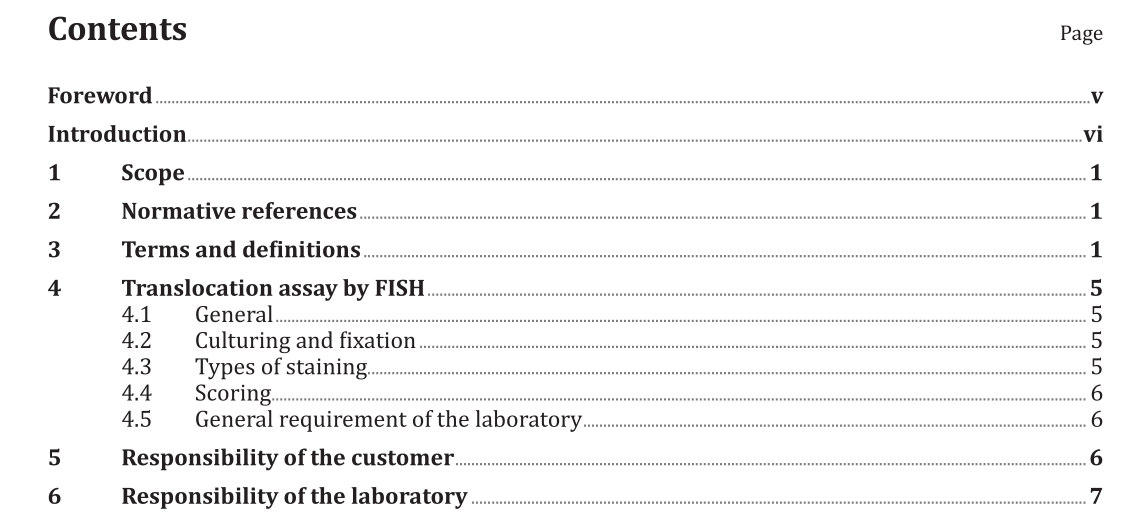ISO 20046:2019 pdf download.Radiological protection — Performance criteria for laboratories using Fluorescence In Situ Hybridization (FISH) translocation assay for assessment of exposure to ionizing radiation
1 Scope
The purpose of this document is to provide criteria for quality assurance (QA), quality control (QC) and evaluation of the performance of biological dosimetry by cytogenetic service laboratories.
This document addresses:
a) the responsibilities of both the customer and the laboratory;
b) the confidentiality of personal information, for the customer and the laboratory;
c) the laboratory safety requirements;
d) sample processing; culturing, staining and scoring, including the criteria for scoring for translocation analysis by FISH;
e) the calibration sources and calibration dose ranges useful for establishing the reference dose-response curves that contribute to the dose estimation from chromosome aberration frequency and the detection limit;
f) the scoring procedure for translocations stained by FISH used for evaluation of exposure;
g) the criteria for converting a measured aberration frequency into an estimate of absorbed dose (also appears as “dose”);
h) the reporting of results;
i) the QA and QC;
j) Annexes A to F containing sample instructions for the customer, sample questionnaire, sample datasheet for recording aberrations, sample of report and fitting of the low dose-response curve by the method of maximum likelihood and calculating the uncertainty of dose estimate.
4 Translocation assay by FISH
4.1 General
The frequency of chromosomal aberrations seen at metaphase in cultured human peripheral blood lymphocytes is used for absorbed dose estimation after suspected exposure to ionizing radiation. This document focuses on retrospective evaluation of exposures which occurred in the past or protracted exposures where the dicentric assay (see ISO 19238) and the cytokinesis block micronucleus assay (see ISO 17099) are not applicable due to the decrease in this type of damage over time. The aberrations to be used are translocations and insertions in stable cells. For the application of this document, the service laboratory shall choose which type of aberrations to score for the purpose of assessing absorbed dose estimates and shall be consistent throughout. It has been well established that the background translocation frequency in individuals varies with age due to various confounding factors (i.e. nutritional status, genotoxic exposures, lifestyle factors, malsegregation of sex chromosomes). This is an important consideration to take into account for absorbed dose estimations using translocation analysis. Hereafter, chromosome aberrations are referred to as translocations but may include insertions if determined by the service laboratory.
ISO 20046:2019 pdf download
